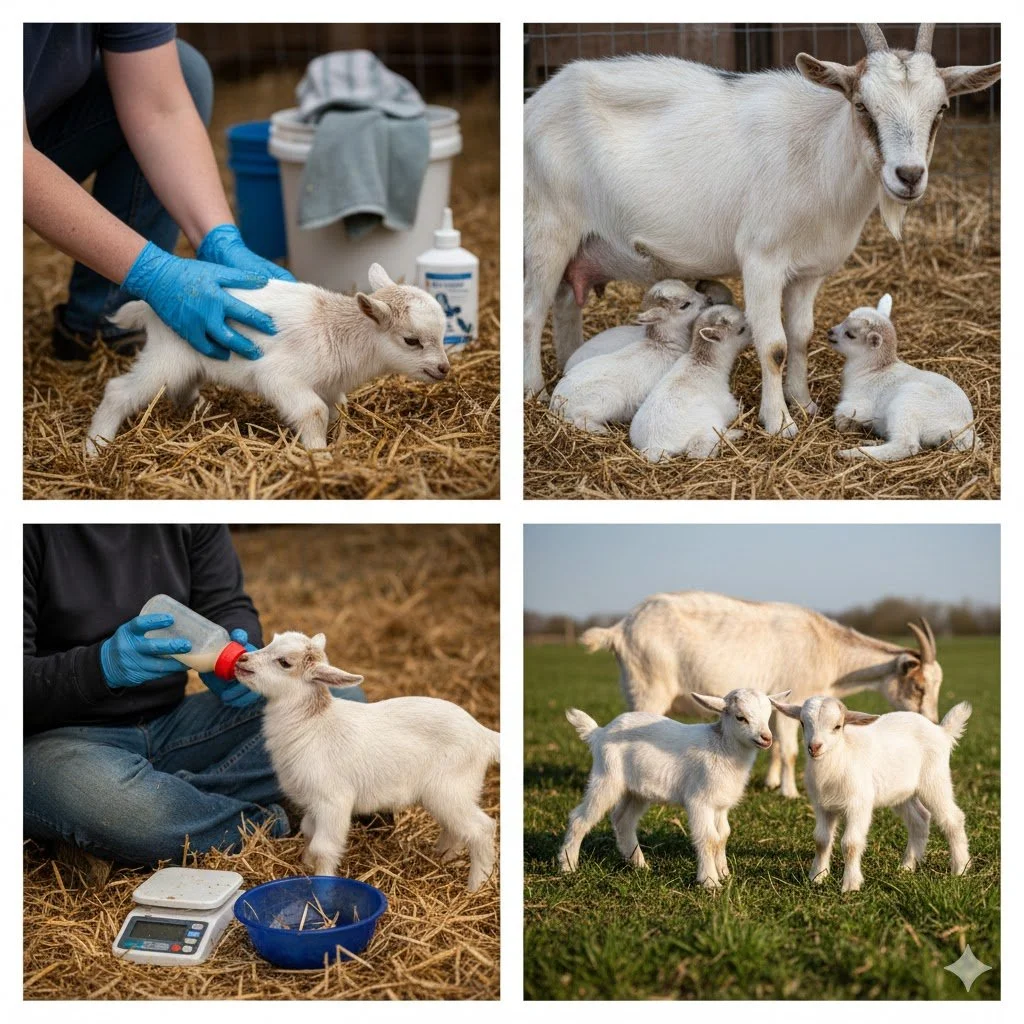The Realities of Goat Kidding: More Than Just Cute Babies
Meet Elsa! Watch here birth at the end of this blog!
There’s something undeniably charming about a newborn goat – all wobbly legs, big eyes, and an insatiable curiosity. For those of us who raise goats, the kidding season is a time of both immense joy and, let's be honest, a good deal of work and watchful waiting. While the internet is full of adorable goat videos, the reality of kidding is a bit more hands-on, a little messy, and often a test of patience and quick thinking.
First things first: don't be afraid to get messy and help, but give mom a chance to step up and take over. Goats are generally excellent mothers, and their instincts are strong. Most of the time, they'll handle the birth and the immediate aftermath with minimal human intervention. They'll clean the kids, encourage them to nurse, and be fiercely protective. However, sometimes a kid might be malpresented, or a mom might be exhausted, and that's when you might need to step in. Having gloves, iodine for naval dipping, and clean towels on hand is always a good idea. Don't be afraid to gently assist if you see a struggle, but always allow the doe to bond and take over the care as soon as possible. Her natural instincts are usually best!
Now, let's talk about the numbers game, especially with larger litters. It's not uncommon for goats to have twins, and triplets are a regular occurrence in many herds. Quadruplets happen too, though they are less frequent. While it's exciting to see multiple babies, it also brings a heightened level of vigilance.
Here's the often-overlooked reality: goats only have two udders. This is a critical point when dealing with triplets or, especially, quadruplets. Imagine three or four hungry mouths all vying for two teats! While some does can miraculously manage, it's often a recipe for undernourished kids, particularly the smallest or weakest ones.
This is where your intervention becomes crucial. Bottle-feeding and monitoring size and weight are paramount when dealing with litters larger than two. You'll need to:
Identify the weakest links: Observe which kids are struggling to nurse or are being pushed away by their siblings. These are your priority for supplemental feeding.
Invest in colostrum and milk replacer: Having high-quality goat colostrum replacer (for those critical first hours if a kid doesn't get enough from mom) and goat milk replacer on hand is essential. Cow's milk can work in a pinch, but goat-specific products are generally better.
Establish a feeding schedule: Bottle-fed kids need frequent, small meals. This often means waking up in the middle of the night, especially for newborns.
Weigh regularly: A kitchen scale is your best friend. Weighing kids daily for the first week or two will give you concrete data on their growth. If a kid isn't gaining weight consistently, or is losing weight, it's a red flag that requires immediate attention.
Rotate kids: Some people find success by rotating kids on the doe – allowing two to nurse for a period, then swapping them for the other two. This requires constant supervision but can help ensure everyone gets a fair share.
The survival rate for triplets and quadruplets can be lower than for singles or twins, precisely because of the feeding challenges. While a strong doe with excellent milk production might successfully raise three or even four, it's much more likely that you'll need to step in with the bottle to ensure all kids thrive. It's a commitment, but the reward of seeing all those little ones grow strong and healthy is immeasurable.
So, as kidding season approaches, remember it's not just about the "aww" factor. It's about being prepared, being observant, and being willing to get a little dirty to ensure your new additions have the best possible start in life. Happy kidding!
Watch Mimi go through the magical moment of giving birth to her baby goat kid!!



